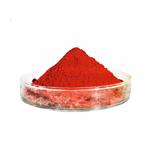Description
Refer to LICORICE.
Chemical Properties
Licorice extract is produced by extraction of the comminuted roots and rhizomes of Glycyrrhiza glabra, with boiling
water followed by evaporation of the aqueous extract. The extract has a sweet, mild odor and a very sweet taste. Also see Licorice.
Uses
licorice extract (Glycyrrhiza glabra) is considered an anti-irritant, studies indicate an ability to absorb uVA and uVB rays. Studies also conclude that licorice extract has a depigmenting effect as well as an inhibitory effect on melanin synthesis given its ability to act as a tyrosinase inhibitor. As a depigmenting agent, licorice extract is described as more effective than kojic acid and 75 times more effective than ascorbic acid. The chief constituent of licorice root is glycyrrhizin, present in concentrations that range from 5 to 24 percent depending on the variety of licorice used. A member of the bean family, licorice’s pharmacological properties are found in the plant’s roots and stem.
Definition
Extractives and their physically modified derivatives such as tinctures, concretes, absolutes, essential oils, oleoresins, terpenes, terpene-free fractions, distillates, residues, etc., obtained from Glycyrrhiza glabra, Leguminosae.
Composition
A number of substances are known to be present in licorice extract, some of which may be artifacts introduced in
processing. Principal constituents consist of glycyrrhizin (20%), reducing sugars (5%), nonreducing sugars (5%), starch, dextrin and
gums (30%), ash (8%) and moisture (17%). In addition, licorice roots contain triterpene, flavonoids and B vitamins (Burdock, 1997).
Taste threshold values
Taste characteristics at 0.1%: lingering sweet glycyrrhizin, with a brown, syrupy, woody aftertaste.



